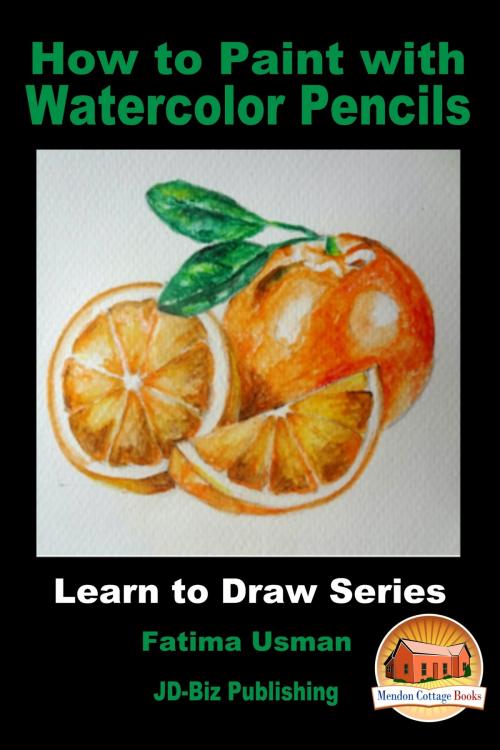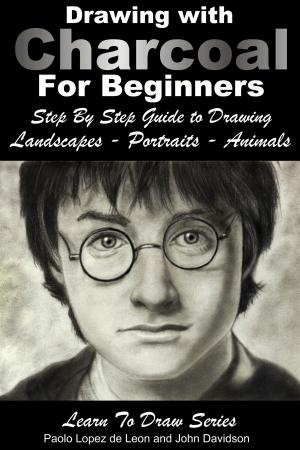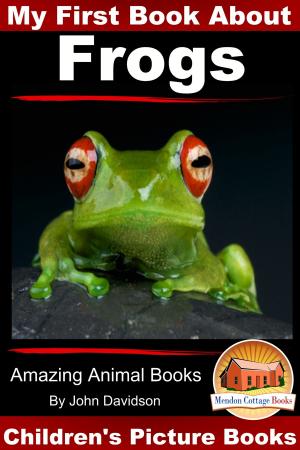How to Paint with Watercolor Pencils
Nonfiction, Art & Architecture, General Art, Art Technique, Water Colour, Home & Garden, Crafts & Hobbies| Author: | Fatima Usman | ISBN: | 9781370900824 |
| Publisher: | Mendon Cottage Books | Publication: | January 18, 2018 |
| Imprint: | Smashwords Edition | Language: | English |
| Author: | Fatima Usman |
| ISBN: | 9781370900824 |
| Publisher: | Mendon Cottage Books |
| Publication: | January 18, 2018 |
| Imprint: | Smashwords Edition |
| Language: | English |
Table of Contents
About Watercolors
Short History
Types of Water Colors
Watercolor Pencils
Different Techniques of Watercolor painting
Materials used for Watercolor Painting
Material for drawing
Watercolor Pencils
Tracing Paper
Watercolor Pencils
water color pencils are a helpful way of achieving realistic results from watercolors.
Watercolors
Paper
Brushes
Containers
Masking fluid
Tissue Paper
Board
Masking Tape
Hair Dryer
Practice Lessons
How to paint a leaf with watercolor pencils
How to paint a Ladybug with watercolor pencils
How to paint oranges with watercolor pencils
How to Paint a Pokémon with watercolor pencils
End Word
Artist Bio
Publisher
Short History
Water colors are also called Aquarelle which is a French word. Aquarelle means water. In these paints, the colors are made of pigments mixed in water based liquid. Water color painting had bloomed in England, somewhere in eighteenth century. Basically water colors history goes as far as cave men. The cave men were actually the first people who used colors that were water based to paint their ritual paintings in caves. They used their hands and fingers to paint different animals on cave walls. The ancient Egyptians also used water based paints to tell their stories. They painted stories of power, drought, and blessings on their walls. The Egyptians also painted on paper that was made of papyrus with water based colors. The Chinese and Japanese also used water colors for their works. These artists worked on fabric and used silk as their work surface to paint literature and calligraphy. Chinese calligraphy is renowned throughout the world and many Chinese artists still use water based inks. After that, from China the tradition was taken to western world. The Indians and Persians used water based paints in their works of decoration, and the Muslims used them to show their religious history.
Paper, off course, played its role in flourishing of our beloved water colors. We can give the credit to Chinese. Chinese were very good at creating paper. They had handmade papers of best qualities. In the eighth century, the Arabs came to know their ways of making papers. Europeans imported paper for a long time until they managed to open their own mill in Italy. In early ages paper was considered a great luxury as it was very expensive. This was one of the major reasons why the water color paintings did not flourish for a long time. When paper became available to people the great artists like Leonardo de Vinci started using it for their drawings. Albrecht Durer, a German artist, is known to be the first master of water colors. Among his many paintings, the Owl is worth seeing and worth studying. The depth of the eyes and the softness of the bird are very evident.
Table of Contents
About Watercolors
Short History
Types of Water Colors
Watercolor Pencils
Different Techniques of Watercolor painting
Materials used for Watercolor Painting
Material for drawing
Watercolor Pencils
Tracing Paper
Watercolor Pencils
water color pencils are a helpful way of achieving realistic results from watercolors.
Watercolors
Paper
Brushes
Containers
Masking fluid
Tissue Paper
Board
Masking Tape
Hair Dryer
Practice Lessons
How to paint a leaf with watercolor pencils
How to paint a Ladybug with watercolor pencils
How to paint oranges with watercolor pencils
How to Paint a Pokémon with watercolor pencils
End Word
Artist Bio
Publisher
Short History
Water colors are also called Aquarelle which is a French word. Aquarelle means water. In these paints, the colors are made of pigments mixed in water based liquid. Water color painting had bloomed in England, somewhere in eighteenth century. Basically water colors history goes as far as cave men. The cave men were actually the first people who used colors that were water based to paint their ritual paintings in caves. They used their hands and fingers to paint different animals on cave walls. The ancient Egyptians also used water based paints to tell their stories. They painted stories of power, drought, and blessings on their walls. The Egyptians also painted on paper that was made of papyrus with water based colors. The Chinese and Japanese also used water colors for their works. These artists worked on fabric and used silk as their work surface to paint literature and calligraphy. Chinese calligraphy is renowned throughout the world and many Chinese artists still use water based inks. After that, from China the tradition was taken to western world. The Indians and Persians used water based paints in their works of decoration, and the Muslims used them to show their religious history.
Paper, off course, played its role in flourishing of our beloved water colors. We can give the credit to Chinese. Chinese were very good at creating paper. They had handmade papers of best qualities. In the eighth century, the Arabs came to know their ways of making papers. Europeans imported paper for a long time until they managed to open their own mill in Italy. In early ages paper was considered a great luxury as it was very expensive. This was one of the major reasons why the water color paintings did not flourish for a long time. When paper became available to people the great artists like Leonardo de Vinci started using it for their drawings. Albrecht Durer, a German artist, is known to be the first master of water colors. Among his many paintings, the Owl is worth seeing and worth studying. The depth of the eyes and the softness of the bird are very evident.















